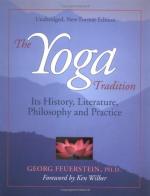|
This section contains 894 words (approx. 3 pages at 300 words per page) |

|
SOURCE: “Conduct,” in Women in the Eighteenth Century: Constructions of Femininity, pp. 14-17. London: Routledge, 1990.
In the following excerpt, Jones explores the moral aspects of seventeenth- and eighteenth-century social conduct manuals, many of which focus on women and marriage.
The concern of all eighteenth-century ‘conduct’ manuals for women is how women might create themselves as objects of male desire, but in terms which will contain that desire within the publicly sanctioned form of marriage. They form a significant sub-genre among the hundreds of books and periodicals (the most famous of which is Addison and Steele's Spectator) which offered instruction in all areas of social, domestic, and professional behaviour to a rapidly growing readership. Highly popular, they were powerfully instrumental in defining an ideological identity for the emergent middle class. Fictionalized forms of advice literature were also popular. …
George Savile, Marquis of Halifax's Advice to a Daughter [was] first...
|
This section contains 894 words (approx. 3 pages at 300 words per page) |

|


